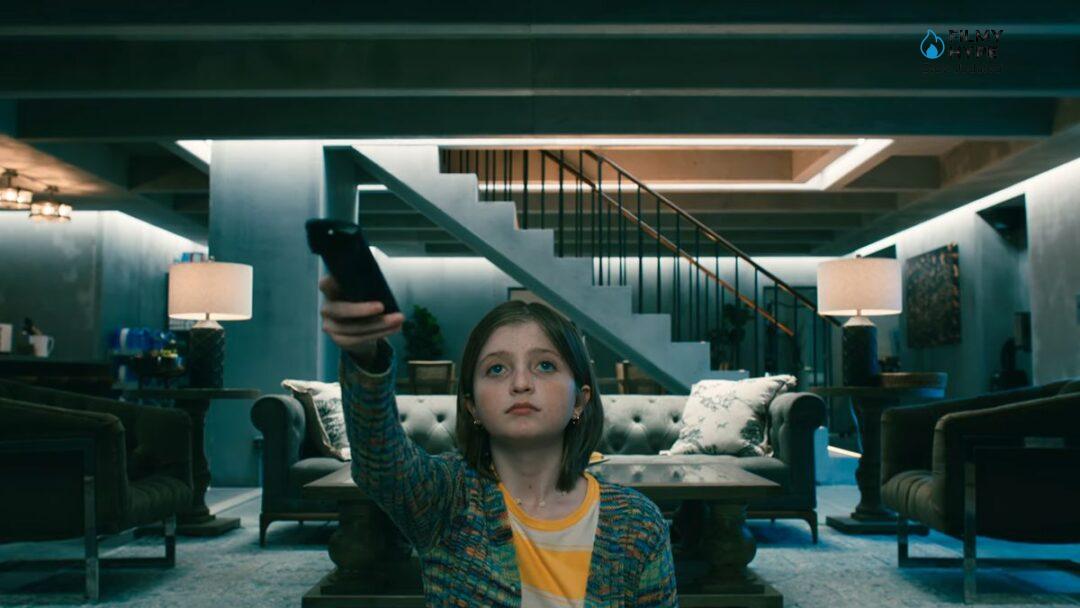Leave the World Behind: The Meaning of Friends and The Ending Explained by The Author
“There was an ending that was inevitable,” says Rumaan Alam, author of Leave the World Behind, the novel on which Netflix’s latest psychological thriller is based. “The key thing to keep in mind… is that the book ends with a question mark.” Sam Esmail’s adaptation makes some modifications to the book – particularly at the end – but according to Alam (who also serves as the film’s executive producer), these changes were “emotionally faithful to the book.” Leave the World Behind tells the story of Amanda (Julia Roberts) and Clay Sandford (Ethan Hawke), who along with their children Rose and Archie (Farrah Mackenzie and Charlie Evans) go on an impromptu vacation to Long Island. Mahershala Ali plays GH Scott, the owner of the luxurious mansion rented by the Sandfords, who decides to return to the house with his daughter Ruth (Myha’la) to escape the sudden chaos that took over the city. The two families are forced to live together amid danger and uncertainty, while the world around them begins to collapse.

The Ending of Leave the World Behind, Explained by Author Rumaan Alam?
Neither the Netflix movie nor the original novel gives a definitive ending. Leave the World Behind is less concerned with the apocalypse than with the psychological effects of the crisis, which exacerbate the individualistic and selfish tendencies present in society. George explains to Clay that he has studied the cost-benefit analysis of several military campaigns. The most terrifying is a simple three-step maneuver “that could overthrow a country’s government from within”: the first step is to eliminate communications and transportation systems; then terrorize the public with contradictory information; Without a defined enemy, the third step will occur on its own: the population will turn against their government and themselves, leading to a coup d’état and civil war. “It is the most profitable way to destabilize a country. Because if that nation is dysfunctional enough, it would do the job for you”.
Rumaan Alam addressed the power of uncertainty, the accuracy of GH’s explanation, and why no definitive conclusion is offered for the characters in Leave the World Behind:
“George’s monologue gives viewers a lot more explanation than I expected. That was a key part of the writing process for me, but I also don’t know if that theory is what happens in the story. The first editor of this book told me, ‘I understand that you must ignore what is happening.’” He then mentioned aliens and I said, ‘Aliens? That’s where your head went?’ I find it very enjoyable because I can’t control what people think and readers come to something with their frame of reference”.
“George describes this attack scenario, which will induce uncertainty in the population. In a way, what he fears is exactly what he is experiencing. It’s just uncertainty. You, as a viewer, must fill in the blanks on what that uncertainty looks like, whether it be a cyberattack, an act of war, an environmental disaster, or simply a collapse of civic order. “What’s so scary is that you just don’t know.”
“GH is saying these things based on what he knows and what his life experience has been. And if one of the other characters had been allowed to speculate, he would probably say something different and informed by his own experience. That’s what art is about: you have to try to decipher it.”
The Importance of Friends in Leave the World Behind?
While Amanda and Ruth observe New York under attack from a distance, the film ends when Rose finds the Thornes’ ‘doomsday bunker’, a space prepared for the catastrophe which also has a collection of DVDs with the latest Friends season. While the girl watches the long-awaited finale of the series, the Rembrandt theme, I’ll Be There For You, plays over the film’s credits. It’s a closing full of irony: when the world turns against itself, no one will be there to help you (in the book, Rose collects supplies from the bunker to take to the families. For Alam, “ending Leave the World Behind with some humor is very satisfying and rewarding. It’s a kind of self-reflection: Sam [Esmail] is a filmmaker and has also worked in television. In a way, he is stating something about the power of that medium and the influence of it on this character”.
“It’s funny, but I don’t think it’s a joke. I don’t think it’s a joke for Rose. I don’t think it’s a joke for the public. I don’t think it’s a joke about Friends. It’s a reminder that art is a kind of balm. The experience of watching the movie in theaters is very powerful. I’ve had the opportunity to see audiences respond to the ending three times and no one knows what to make of it. They say, is this funny? this is scary? Is it over? And I like that very much”. “In the movie they set a timer, so there’s a clock ticking and we hear the alarm go off. That is the last moment we are with Ruth and Amanda. And the last thing GH said is that we have to go to that bunker. GH is very competent and I feel that he has solved all the problems. But I don’t know what will happen to Archie. The truth is that I do not know. This is something I’ve heard Sam say a lot and he doesn’t know either.”
On why not give the audience some closure at the end of Leave the World Behind, with the families reunited in the bunker, Alam responded:
“Wouldn’t that be so unsatisfying? Leave the World Behind is a film that respects you enough as a viewer to not offer that. In that final scene between Julia and Myha’la, they don’t hug. Even before that, when they’re in that little shed and they come to a detente, Ruth recognizes that there’s some truth in the things that Amanda has said, that they agree on something, but it doesn’t end with a hug”. “It’s not that kind of story. I have no problem with a big disaster movie that saves six or eight protagonists and brings them together afterward and lets you say, “Well, everything’s going to be okay.” I just don’t think this is that kind of movie”.



